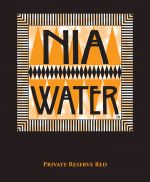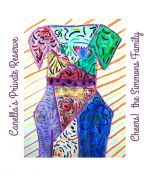
A fair amount of people ask, rather timidly, if we put things mentioned in the tasting notes into the wines to get them to smell or taste like, say, cherries or grapefruit or cinnamon or, (I think the one that got the most incredulous comments) graphite. And, I say, oh, not to worry, there’s not enough bacon grease in there to harm your health…
No! Kidding! There is nothing added to a bottle of fine wine made from grapes. Ever. We are not talking about “fruit” wines or dandelion wine or other non grape products here.
But, really, when you think about it, it’s a good question. Because, how do those smells and tastes get there?
It’s a complex issue if you want to get into the real chemistry. So, trying to keep things simple, let’s look at a few basic reasons for this phenomenon starting with fermentation. It’s here where almost all of it begins. It is during this process, when the yeast is hungrily devouring the sugar in the grapes, turning it into alcohol, that various chemical compounds are also forming. Thousands of them. Some are called stereoisomers. These compounds have similar molecular structures (simply turned in space thus the “stereo”) as the scents and tastes we are familiar with and recognize just from our regular hanging out lives. Like apples and blackberries and lemons and roses, strawberries, butter, wet rocks and don’t forget Grandma’s dusty raspberry candies! Ah, you might say. Fascinating. Or, maybe not. Don’t dwell.
Remember back in the Viognier column where I mentioned terpenes?
Uh…ok, let’s refresh. Terpenes, or monoterpenes really, are one of the six basic impact compounds found in wine. These are distinctive signature smells and tastes corresponding to particular wines. Monoterpenes are responsible for the especially aromatic floral, lanolin and sweet fruit smells in Viognier and other wines like Gewürztraminer, Albariño and some Rieslings.
And remember back in the Chardonnay column where I explained malolactic fermentation? What? Alright…I can take it. So the impact compound that results from ML is diacetyl, that creamy, buttery smell and taste.
I think you get the idea. There are more impact compounds that I find quite interesting. But, for the sake of brevity, I will save these for another time because there are a couple of more influences on the smell and flavor of wine that I do want to mention here. One is oak. Oak used for wine comes from different parts of the world, France, Hungary, and America mostly. But, overall, each contributes their particular aromas and flavors of spice, vanilla, coconut and tannins to wine aged in barrels.
The last influence on the taste and smell of wine is a very particular and important one that bears thinking about. That is individual perception. We all taste and smell differently. And, to be sure, there are the “super tasters” out there outnumbering the normal person’s tastebuds. But we all have associations, with smells especially. And, of course, taste is majority smell. We can all refine our descriptive vocabulary too, by tasting very conscientiously. We bring our own powers of taste and smell associations to the process. Therefore, our perceptions can be different from another person tasting the very same wine. And other senses get involved too. Sight, how a wine appears to us. Touch, the differing mouth feel, the viscosity, or the acidity of wine. I read somewhere that flavor is a multi modal perception. Indeed it is!
And I say let’s celebrate that multi modal perception by having a glass of wine together in peace and harmony. Kumbaya. I mean, cheers!
~ Peggy












0 Comments